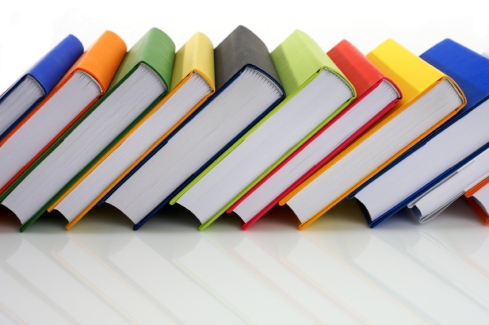
I don’t know if you caught it, but the lead article in today’s Publishing Perspectives is titled: Vitamins 2.0: How Children’s Books Can Change the World in a Digital Age.
The gist: give children beautiful books full of beautiful imagery–rather than digital bells and whistles– and they’ll be better prepared for managing the “high-stimulus” digital future. And start early. The earlier the better.
My reaction: Of course. What took you so long ?
The idea of exposing children to great books isn’t new. In fact, the idea that “great books build great minds” is at the foundation of most progressive literacy initiatives of the last 50 years. I appreciate the new emphasis on the “visual” aspect, but I think it’s just that the mainstream may be waking up to what librarians, teachers, authors, and children’s book publishers have known all along.
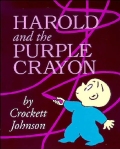 There are a wealth of great picture books which have been building imagination and visual perception since the golden age of the mid-twentieth century: Harold and the Purple Crayon, Where the Wild Things Are, and Goodnight Moon to name just a few. No one who has fallen in love with those books thinks the words are doing the heavy lifting.
There are a wealth of great picture books which have been building imagination and visual perception since the golden age of the mid-twentieth century: Harold and the Purple Crayon, Where the Wild Things Are, and Goodnight Moon to name just a few. No one who has fallen in love with those books thinks the words are doing the heavy lifting.
And I also believe we’ve got a bumper crop of amazing artists right now who are pushing the boundaries of the children’s book artform. Mo Willems, Emily Gravett, Lane Smith, Brian Selznick, Adam Rex, Kevin Henkes, Melissa Sweet, Peter Brown, Antoinette Portis, Loren Long, Shaun Tan, Matthew Reinhart, Peter Reynolds, Bob Shea… I could go on and on.
I don’t think it’s that books need to get flashier or more artistic, and in fact, adding too many bells and whistles can actually get in the way of developing great habits of mind through reading. Just adding more pictures doesn’t add more meaning. It’s hard to imagine how to improve on the bedtime experience of Goodnight Moon, for instance.
Here’s what we need to change: adults need to get better at understanding and encouraging active engagement with media. In general we tend to lack understanding of exactly how sophisticated a learning tool a great children’s book can be. Asking questions about the story, looking for details in the illustrations, anticipating what might happen next–-the
Blog: pixie stix kids pix (Login to Add to MyJacketFlap)
JacketFlap tags: General Comments, Eye on the Industry, Add a tag

In case you missed it, make sure you check out the text of Jason Epstein’s keynote on the future of publishing in the digital world, as presented at the O’Reilly Tools of Change for Publishing (TOC) conference.
In it he lays out a great case for human nature, and how it will save us from the undifferentiated content streaming through the WWW.
Also he articulates his vision for good content (authors must eat), e-readers (yes), large publishing houses (will die), print-on-demand (Gutenberg x 10), and lots of other stuff.
If you don’t know who Epstein is, he has worked in the publishing industry for fifty years as an editor and a publisher, and is responsible for many innovations. He created Anchor Books at Doubleday, which was the first Trade Paperback imprint, and he is the co-founder of On Demand Books, which markets the Espresso Book Machine, which can print and bind a 320 page book on demand in about 4 minutes.
Ten years ago he did a series of lectures on the publishing industry at the New York Public Library which became Book Business: Publishing Past, Present, and Future. I highly recommend it.

Blog: pixie stix kids pix (Login to Add to MyJacketFlap)
JacketFlap tags: General Comments, Add a tag
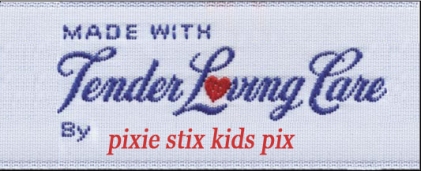
If my blog had a wash-and-wear tag it would say:
Slight imperfections, bumps, and color variations are characteristics of handcrafted projects, and they enhance the beauty of this garment.
Why do I say this?
I’m just back from an extended Book Expo hiatus, which is a three month marathon for me, during which I literally have time for nothing else, including food and sleep.
It’s nice to be home.
In recent link-backs some of you blogeratti have very tactfully pointed out that although I post infrequently, what I have to say is interesting, or relevant, or at least not-irrelevant. I appreciate your circumspection.
But here’s the thing I have noticed about being a blogger. I’m sure you other bloggers will understand. If I’m not careful, blogging begins to feel an awful lot like work. And, as many of you know, I have plenty of work already.
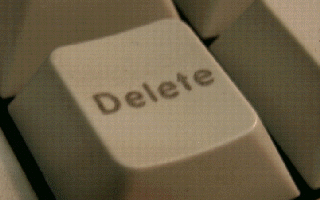
How many of you saw the 4/6 article in the NYT titled In Web World of 24/7 Stress, Writers Blog Till They Drop? Actually, that’s probably a stupid question, since we are a pretty self-referential bunch. I’m sure the blogosphere was alight. Anyway, it talks about bloggers dropping dead from overwork. Most of us kid lit bloggers are nowhere near that level of ridiculousness, but I did have to make a decision early on to pace myself.
It’s easy to see how it can get away from you. Starting out, I got a little thrill each time my blog was mentioned by another blog, especially ones with lots of traffic. I obsessed over my metrics. I lost sleep to write. “They like me! I’m included! MUST-WRITE-MORE!”
My initial experience of blogging suddenly felt very much like high school. Who are the taste-makers? Who are people talking about? What do I want to say about what they’re saying? If I wasn’t writing, I felt compelled to read everything, just in case.
After a few weeks I suddenly thought “Wait a minute! I already went through high school. I am SO over it. Duh.” (Sound of forehead being slapped.) I still check out what’s being talked about, but now I appreciate that reading less insures that what I’m writing about is coming from an original and organic place.
Which brings me to my next point. I also recognized very early on that there are two types of blogs. Those that generate original content and those that serve as a clearinghouse by aggregating lots of interesting information from other blogs/cyberspace in one place, often with added commentary. Aggregating content seemed like a great way to generate traffic, but too much of a treadmill. I guarantee that those recently deceased bloggers in the NYT article were spending lots of time on that same treadmill.
So, original content it is. It suits my creative nature anyway.
I’m a marketer by profession. I know the rule that regular posting=more traffic. It’s true, if traffic is all you care about, and you actually have something relevant to say. It’s possible to bootstrap your way to industry fame through this technique.
But here’s what I care about: writing about whatever interests me, whenever it interests me. Writing about it in depth, and being realistic about everything I have to do. In short, going for authenticity and substance over popularity. (Again, like high school.)
So, I am unfurling the banner of the Idiosyncratic Blogger, and making my confession. I am an inconsistent poster. I may go for quite some time without saying a thing, and then I will post in a clump. I occasionally will apologize to you, my readers out of a sense of guilt. I may make excuses. I hereby give myself permission to have a life beyond this desk. I’m going deep, and I’m in it for the long haul. If nothing else, I promise to be authentic, even in my inadequacy.
Want to join the IB club? I’d love company! I give you permission to be imperfect too!
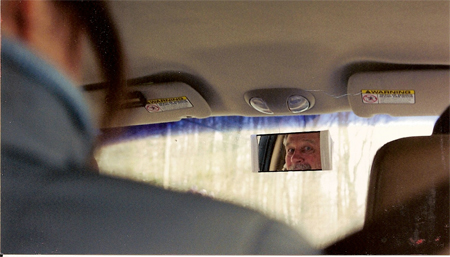
I’m about to cross the 100,000 hit mark here at pixie stix.
I don’t know 100,000 people, so I must be doing something right.
During my childhood, my (slightly eccentric) father had a ritual when his long suffering truck would hit a 100,000 mile odometer reading. (Several of his trucks have made this marker 2 or 3 times, as in 300K.) No matter where he was, he would stop the truck, get out, and circle the truck three times. Could be a busy four lane highway, or it could be a dusty back road. Then, without a word, he would keep driving.
I want to take a moment both to thank the many great people who have linked to me in praise of a post, or those that have been clearly passing the word.
If you were here with me, you would see me circling the desk three times.
Now let’s keep going.

Blog: pixie stix kids pix (Login to Add to MyJacketFlap)
JacketFlap tags: General Comments, Outstanding Design, Great Sidelines, Other Great Kids' Sites, Add a tag
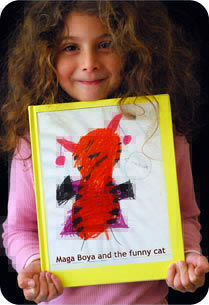
At BEA recently, I was facilitating a panel on the Gen-Z reader, (as in Gen x, gen y, gen z), and one of the threads the conversation turned to was whether the publishing industry can use the music industry as an example for the future. In particular whether artists/authors will take control of the medium as they have in music, thereby cutting out the middle man. The panelists were not convinced that the model went that far, given all the complicated things that have to happen to make a book a book. I myself am pretty sure that we will see increasing examples of this, given that consumer control over pretty much everything is the wave of the future. I definitely think that the readers and authors of the future will be much more empowered and DIY about things.
It’s already happening.
I give you Tikatok, an online publishing service for the young authors of the moment. Started by a mom, this is basically a site where, for less than $20, children can self-publish their own paperback or hardcover book. Using “story sparks” or completely from scratch, they do it all using the template based system. They can upload art directly to the site or mail it in. The whole thing is very well designed, clean, and easy to navigate. They even offer packages to schools and libraries for group orders. (This might be a very cool project for a children’s bookstore too!) The site is very family centered, and has an awesome and well-thought-out privacy policy.
And, the above handmade example aside, there are several examples on their site of books with fantastic art and photographic treatments. It’s possible to come up with a very credible product. Especially if you’re a second grader.
Yes, there have been self-publishing projects for kids in the past, but never have they been so kid-centered, user-friendly, or so interactive. Seriously, this is something an elementary kid could do pretty much on their own. Certainly, not every tikatok author will run their own publishing house in the future, but it’s not a far leap from here to web publishing, blogging, and all other manner of communication. I do think the youngsters of today will have a VERY different idea about communication when they hit adulthood.
As a mom, I think this is pretty cool.
What do you think?

Blog: pixie stix kids pix (Login to Add to MyJacketFlap)
JacketFlap tags: Great Sidelines, General Comments, Great Sidelines, Add a tag
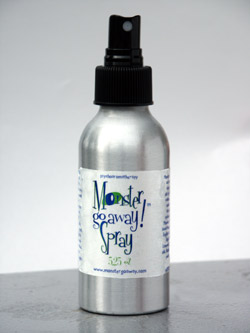
Okay, this wins my award for best sideline of the year.
Developed by a mother of three, this is the ultimate in monster defense. The spray itself is made of English Roman Chamomile, High Altitude French Lavender and Italian Mandarin essential oils, but its psychological mojo comes from the empowering feeling kids get by running around their room at bedtime, spraying it anywhere and everywhere monsters lurk. Then, once all the meanies are vanquished, all that lovely calming fragrance will help youngsters sleep sweetly.
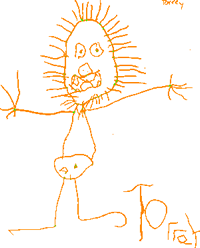
Extra bonus: parents of stinky children everywhere will rejoice at the added nasal benefits.
At $10.00 per bottle retail, it seems a small price to pay for a smooth bedtime. It’s unclear if she offers wholesale terms, but there is a volume discount. Order directly from the mom in question.

Blog: pixie stix kids pix (Login to Add to MyJacketFlap)
JacketFlap tags: General Comments, Quirky and Hard to Define, Cool and Contemporary, Add a tag

For those of us non-adopters who prefer our books the old fashioned way, the Italian design company Nobody&Co has made it so that we don’t even need to leave our comfy seat for our next read. This bibliochair chair holds nearly 16 1/2 linear feet of books, and comes in six different finishes and cushion covers so it’s basically a sit-alone library. My only concern? Where do you put your arms to rest?
Oh well, fashion hurts. Your reading corner never looked so mod.

Blog: pixie stix kids pix (Login to Add to MyJacketFlap)
JacketFlap tags: General Comments, Add a tag
Blog: pixie stix kids pix (Login to Add to MyJacketFlap)
JacketFlap tags: Industry Resources, General Comments, Book Awards, Industry Resources, Add a tag
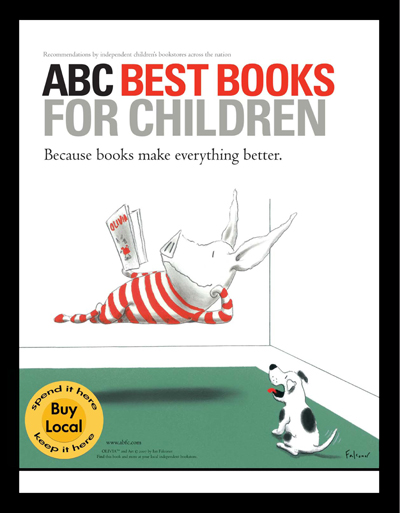
Hello Bookhounds.
Looking for a good recommendation?
Each year ABC produces a 20 page, full color consumer catalog packed with 240 of our picks for the top children’s books of the year.
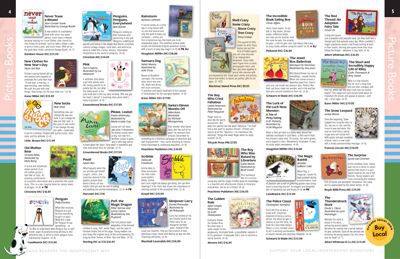
The catalog alchemy begins with bookseller recommendations, and then is rounded out with an exhaustive review of critical picks, award winners, and small press gems that sometimes escape attention.
400,000 of this catalog are printed and distributed to consumers through ABC member stores in the fourth quarter, but as a member of the pixie stix faithful, you can print out a low-res version here, as well as a copy of the booklist by publisher.
 If you like the list, you’ll *heart* your local independent children’s bookstore even more! Please consider buying these books locally, because investing in a relationship with your local independent children’s bookseller will pay off many times over in great recommendations in the years to come. Find your local independent bookstore at BookSense.
If you like the list, you’ll *heart* your local independent children’s bookstore even more! Please consider buying these books locally, because investing in a relationship with your local independent children’s bookseller will pay off many times over in great recommendations in the years to come. Find your local independent bookstore at BookSense.
Of course, with nearly 18,000 children’s titles published every year, there are always many more worthy titles than we can include, so as a EXTRA BONUS here’s the pixie stix 2007 fav’s list, which includes the catalog titles and so much more.
Enjoy!!

Blog: pixie stix kids pix (Login to Add to MyJacketFlap)
JacketFlap tags: General Comments, Add a tag
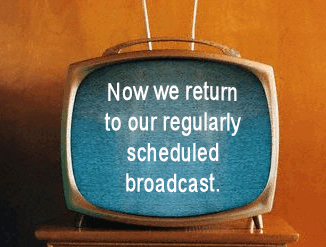
Hello faithful readers.
As if I wasn’t taking on enough with a new baby this year, we’ve gone and moved from the picture postcard quaintness of New England…
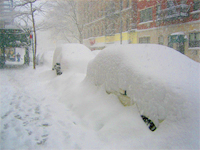
to the picture postcard sunsets of Miami….

Sorry I’ve been lax with my postings, but I’ve had my hands full.
We’re almost set-up, so we’ll resume with our regularly scheduled program shortly.
Yours truly,
pixiestix

Blog: pixie stix kids pix (Login to Add to MyJacketFlap)
JacketFlap tags: Behaving Badly, Bad Books, General Comments, Add a tag
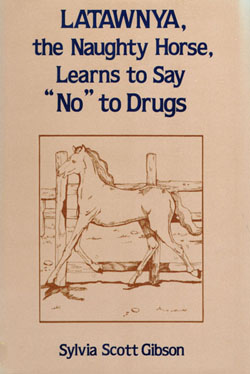
Okay, so I’m at an author luncheon yesterday being hosted by the good folks at Houghton Mifflin.
Sitting around the table is a nice little grouping of who’s who in the Boston kid-books scene, including Roger Sutton of the Horn Book, Carol Stoltz from Porter Square Books, the wonderful Anita Silvey, poetess extraordinare Joyce Sidman, (if you have seen her latest book of apology poems, check it out), and the hard-working Alison Morris from Wellesley Booksmith and PW blogger fame.
Apropos of my essay below, the conversation turned to self-published children’s books and customer reviews on websites, and Alison brought the above to my attention. Props to her, because I think this is just about the funniest thing I have ever seen on Amazon.
Self-published authors, take note.
Published in 1990 via Vantage Press, a notorious vanity publisher, LATAWNYA, the Naughty Horse, Learns to Say “NO” to Drugs is the story of a—well—a naughty horse named Latawnya. And her sisters Latoya and Daisy. And how they run into four other horses Connie, Crystal, Jackie and Angie who are all playing a “smoking game and a drinking game”. But wait, why paraphrase when you can read the whole book for yourself. Go ahead.
Here’s my favorite part:

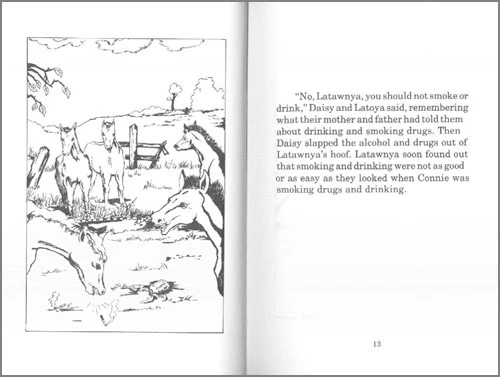
Now putting aside the amazing writing for a minute, let’s just meditate on the image of one horse slapping the alcohol and drugs out of another horse’s HOOF. I swear I laughed so hard I cried.
And if the book itself makes you laugh, be sure to read the reviews on Amazon. Like this one:
![]() Thank you Latawna!
Thank you Latawna!
I used to be an alcoholic, drug-addicted AND naughty horse.
But thanks to this inspired work ( thank you God ),
I am not a horse anymore.
So, who is this author? Perhaps she herself has had a bad brush with “smoking drugs”.
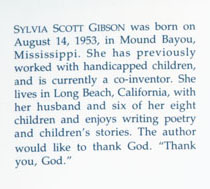
Lest you think I am making fun of the message here, I am not. It’s a very important message.
I have also occasionally thanked God, but not twice in the same bio.
This is the perfect example of how a great message can be completely overshadowed by a bad delivery. It’s like proposing marriage in a clown suit. In this particular case, we have a work that is so bad it’s genius, and like Snakes on a Plane, it’s poised for cult fame.
Maybe Sylvia should put it back in print, because she might make some money on it finally.
Listen up, people. It’s not the drug smoking horses you have to be afraid of, it’s having a story like this make you the butt of jokes on Amazon for years.
Save yourselves. Just say no.
***
Many thanks to Walker B over at The Something Awful Forums for first making this available to the wider public after he found it in the elementary school library where he works. This deserves to see the light of day, if only to serve as a warning to others.
Blog: pixie stix kids pix (Login to Add to MyJacketFlap)
JacketFlap tags: General Comments, Add a tag

One of the most perennial topics of discussion that comes up among members of the ABC is the (sometimes tricky) relationship between booksellers and authors.
In rare moments of quiet, booksellers on the front lines share their war stories about off-putting cold calls, misguided interruptions, unpublished manuscripts about pets and grandchildren, and frustration at the number of would-be authors who want stores to carry their self-published books on consignment.
On the other side, ABC fields hundreds of calls from authors and publishers every year about who we are, and whether or not we can help them promote their books. (We can’t, other than providing a great network should they want to join.) Clearly, there is a hunger to figure out a way to penetrate the market.
To be sure, we sympathize with their position because getting a book published is like threading a very fine needle. And once that book is published, getting it into the hearts and minds of independent booksellers is even tougher. After all, not every single book coming out of a publishing house can receive the same amount of marketing resources. That’s just the reality of publishing in an age where thousands of new books are released every season.
More and more, authors in the current publishing climate think that a little guerrilla marketing might help them get ahead. That perhaps by hustling on behalf of their projects they can do their part to get the word out. (That is—when they’re not writing, or illustrating, or doing free school visits, or running their business, or taking a shower and putting the kids to bed—to paraphrase my delightful friend author/illustrator Mary Newell de Palma.)
They recognize that building relationships with booksellers is important. And they are right, but how to do it? What’s most effective?
In a recent guest column entitled The Proper Care and Feeding of Booksellers, and How It Can Work for You, blogger Bookseller Chick put out a call for authors to dispense cookies liberally when visiting bookstores. The theory here is that a bookseller will form a favorable opinion of the visiting author, and will recommend that author’s book next time they have an opportunity.
Nice author + cookie = sale.
So, should authors everywhere get out their oven mitts? Does the cookie theory work?
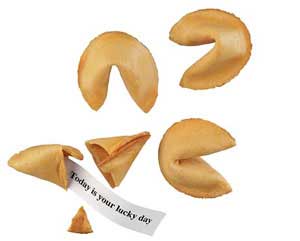
The question sparked a lively debate among ABC members. Here’s what Carol Chittenden, the owner of Eight Cousins bookstore, and the hardworking children’s buyer for Bookstream had to say about it on a recent post to the ABC list serv:
“There are plenty of opportunities for good relationships between authors and booksellers. At the head of the list—waaay above everything else—is to WRITE A TRULY EXCELLENT BOOK, of course. But I’m adding some others, and hope other booksellers might chime in.
- Offer a day’s gift-wrapping backup during the holiday season.
- Put up posters for bookstore events.
- Help staff an out-of-store event.
- Help read and evaluate galleys.
Those are just a few of the things that take time but not much training, and help an author see the world from the back room perspective. And any bookseller is prepared to respond to the offer to sign stock: they’ve handled it before, or else it’s time they figure out a gracious response. No need to be shy: tactful will do nicely.
And none of this should be construed as a disdain for cookies. I am the Cookie Troll at Eight Cousins: there’s even a remodeled troll doll (green pantsuit, flowered scarf, silver in the hair, glasses, button that reads “I Love Cookies”) that stands alert atop my computer. But I’d rather have a fine, fine book than a cookie any day.”
Clearly, there is more at play here than just slinging cookies. The principal of being nice to bookstores and booksellers goes a long way, but I would urge authors to dig a little deeper. At the most basic level, creating successful and long-lasting relationships in the children’s book business is really about understanding and helping booksellers do their jobs better.
Want to make friends with a bookseller? Then help them build their business.
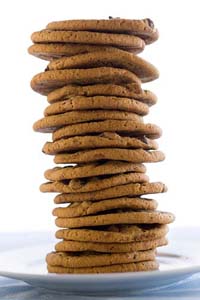
Here’s my top five suggestions:
1) Patronize your local independent bookstore. Be a regular. Nothing shows your commitment to independent bookstores like putting your money where your mouth is. Your loyalty will go a long way in building a successful and honest relationship. All of Carol Chittenden’s excellent suggestions above speak to this. Get involved.
2) Put a Booksense link on your website. It’s amazing how many authors talk about loving independents, but then send their web visitors directly to Amazon. A Booksense.com link is such an easy thing to do, and independent booksellers notice. Believe me.
3) Know your audience. When communicating with booksellers, keep it short, sweet, and respectful. A written communication trumps a cold call or a visit. If you are visiting a store for the first time, be very sensitive of a bookseller’s time and priorities. Introduce yourself, [hand over the cookies], get an e-mail, and ask if you can send information about your book. Don’t let your passion for your own project blind you to a bookseller’s priorities and make you pushy.
4) Act like a publishing professional. Learn everything you can about the business. At the very least, subscribe to Publisher’s Weekly, and to a bookselling newsletter like Shelf Awareness. Talk knowledgeably and intelligently about the business. Booksellers work with thousands of titles and authors every year, and they do not need all of the fluffy marketing language you might use for end readers. They don’t want the emotional presentation, they want the publishing facts. Specifications, season, publisher, BRIEF synopsis, notable review successes, publicity, a local angle, a sales success, why this book is different than others in the same category. Don’t inadvertently piss them off by talking about how well it’s selling on Amazon or in the chains. And don’t be like the author that called the ABC office recently and read their entire book about feelings over the telephone. If your verbal pitch lasts more than twenty seconds and your written pitch doesn’t fit in three short paragraphs, you’re talking too much.
5) When developing materials, think about things that would be really useful to booksellers in building their business. Go beyond bookmarks, postcards, and such. Think authorless event kits, downloadable materials for kids, essays in your area of expertise that would be great parent resources. One ABC author member who does this really well is Debra Frasier. Check out the materials she has designed at her website. She regularly does things just for bookstores, and always lets us know when something is available. This is a way to reach a wide audience effectively and cheaply. If you take it on the road, put together a presentation that makes it easy and fun for booksellers. One great example of this is author Brian Lies‘ package for his book Bats at the Beach. We’ve heard nothing but raves about this program, how well planned it was, and how well it worked. (Also, notice the links to independent stores where he’s appearing. Bravo!) Don’t think you have to convert your car into the Batmobile to pull a successful program together. A thoughtful program with an advance kit that might include a poster and press release, good structure, interactive activities, and inexpensive giveaways is great.
Conversely, here’s the five LEAST effective things you can do to work with independent bookstores:
- Mail a single flyer and then follow up with a hard sell either by phone or in person
- Make a cold call to a bookseller, and then monopolize their precious time with a lengthy sales pitch
- Interrupt a bookseller who is working with a customer to talk about your book
- Pull a primadonna and ask why a store isn’t stocking 15 of your book
- Launch your book tour in the chain store down the street
As a final caveat, I would echo Carol Chittenden’s sound advice: Write a good book.
All the cookies in the world won’t save a badly written book. If the book doesn’t have what it takes—good writing, good design, professional illustration, appropriate format, a real binding, a tangible sense of success—it doesn’t matter how nice you are. Bookstores aren’t charities; they’re there to make a living for the people who own them, and it’s a very difficult thing to do these days. Know the hard truth: bookstores can’t carry every book, and they may have to say no to yours.
However, if you’ve got a good book and you know and love your local bookstore, a good cookie can go a long way.
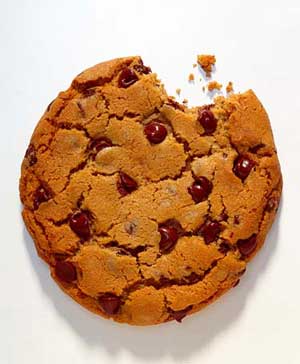
*************************************
Addendum 8/27/07
Check out these FABULOUS cookies made by Sarah Varon, author of Robot Dreams for a recent store appearance. (Let me just say, I *heart* her books, and will review this new one in an upcoming post.) Here’s an author with a wonderful book and wonderful cookies.

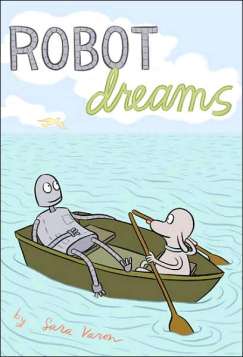
Blog: pixie stix kids pix (Login to Add to MyJacketFlap)
JacketFlap tags: Uncategorized, General Comments, Laugh-Out-Loud Funny, Add a tag
Okay, this has nothing to do with books, other than being a brutal way to dispose of another electronic threat.
However, it made me laugh, and so I will share.
By the by, I have been on a little hiatus as I get this whole “Baby -vs- Life” thing worked out, but you will see regular postings starting next week. I have a backlog of reviews to share, and some ideas about a total overhaul of the book industry as we know it.
Stay tuned, peeps.
Blog: pixie stix kids pix (Login to Add to MyJacketFlap)
JacketFlap tags: General Comments, Add a tag
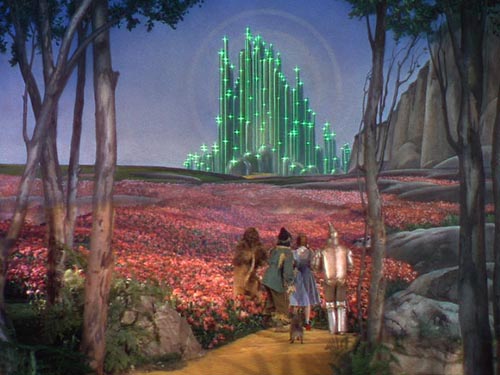
Well, fair readers, another Book Expo America is behind us.
As far as Book Expos go, this one was neither the best nor the worst I have ever attended.
Just the most crowded.
(As it always is in NYC–preliminary figures have attendance at 30,000, up from 22,366 in DC last year. It felt like a deodorant commercial directed by Busby Berkeley.)
For those of you who do not know the history of this show, once upon a time it was run by the American Bookseller’s Association (ABA), and it was the place where publishers went to share their fall lists with booksellers. At a certain point it got too unwieldy for ABA, and it made more sense to let Reed Business take it over. (They are behind a ton of major trade shows, including Comicon and the NY Anime Show.) However, more has changed over the years than just who was running it.
I always find BEA to be a little trippy. On one hand, you have the super-swanky mega-booths from the major publishers, complete with Saturday afternoon cocktail service and leather couches to rest your weary behind. (To give you some sense of the cost—it will run you $45.00 to rent a folding chair at this show.) Free autographed first editions run like wine, and many will end up on ebay before the day is out. On the other hand, you have would-be published authors trying all kinds of guerrilla marketing techniques on innocent passers-by.
My favorite of this year was a woman who asked me to auction off her book–written with her mom about a mouse and some cheese–from the podium of my industry dinner on Friday. In return she would write ABC a check for $5,000. I was so flabbergasted at the audacity and inappropriateness of the request, it was all I could do to wrap my lips around the word NO. She felt that “donating” her book was no different than the artists who had donated their work to the ABC auction.
Lord save me from all of the other authors who would also like to “donate” their books to publishers. These conversations always start off benignly enough, and then take a turn for the worse with the following sentence: “I have a children’s book, and I was wondering…”. Pretty soon you’re caught in a conversation about cats, goats, or grandchildren, and someone is handing you some color xeroxes. (Listen up, those of you who want to write. Don’t let your passion get in the way of good manners.) Don’t get me wrong. I spend a lot of time talking to would-be authors, and I feel for them because they have obviously poured their hearts into their projects. Like all those salmon trying to get up stream, only a few are going to get to reproduce.
But I digress.
Ostensibly, BEA is still supposed to be about the booksellers, and ABA is still prominently involved, but if I had to say what the show is really about, I would say it’s about publishers showing off for other publishers and for the industry at large. This show used to be about selling books, but that is less and less important. Because of pressure from the chains and big box stores for earlier and earlier schedules, the big deals are made elsewhere these days. Booksellers are becoming marginalized in terms of how the show floor operates. Unlike other major book shows like the American Library Association (ALA) or the International Reading Association (IRA), there are relatively few books on display and a lot of smoke and mirrors. (See Alison Morris’ excellent post at PW for more on this.)
It’s a little bit like Oz in that respect.
It is the premier networking event in publishing, and there are some very swanky parties. It is also the place where you can do the best celebrity stalking outside of LA. (Ohmygosh! Next year it will be in L.A.–those of you with celebrity life-lists better make your plans.) As the percentage of books sold through bookstores gets smaller, this show will continue to become less about frontline booksellers, and even more self-referential. Like a snake eating its tale, I wonder where this is heading.
In the meantime, grab those canapes and run.
Blog: pixie stix kids pix (Login to Add to MyJacketFlap)
JacketFlap tags: General Comments, Essential Booklists, Add a tag
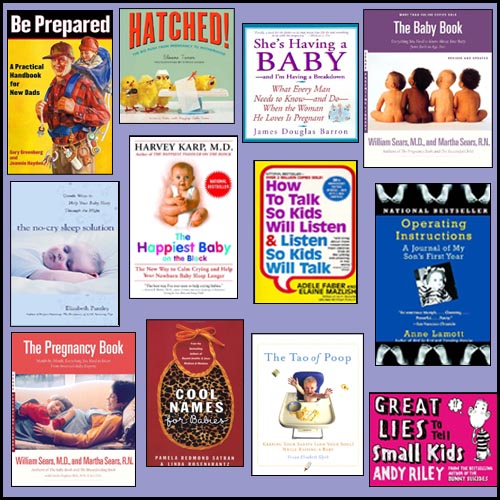
Hello from Babyland. I’m glad to be back.
It’s been a wild few weeks here at pixie stix, but I’m happy to say that it’s also been totally amazing, and our pixie is doing great! (see below)
In thinking about what would be my first post A.B. (after-baby), it seemed that the old adage “write from where you’re at” seemed particularly appropriate. So here’s a round up of the best new parenting books I’ve come across, and they all belong within arm’s reach for anyone expecting or recently delivered.
Let me say that I believe there is such a thing as too much reading when it comes to pregnancy and parenting books. Certainly there is no shortage of books out there that seem purposely calculated to overwhelm and scare the bejesus out of anyone who’s new to the baby game. I have found that the best books in this category combine sound advice with a level headed approach, and I completely embrace anything that delivers the above with some humor and honesty. A couple of these books will come in handy a little later on, but are so good they bear mentioning here. Any of these would be a great shower gift, or the salvation of a sleep-starved new parent. Enjoy!
THE BABY BOOK by William M. Sears, M.D. and Martha Sears
978-0316778008; Little Brown; March 2003; $21.95
This is the closest thing you will find to an owner’s manual for a baby. Covering everything from breast feeding to new baby care, and all kinds of parenting advice for both moms and dads, this is the definitive guide written by a husband and wife team who are a pediatrician and nurse respectively. Commonsensical and strongly supportive of the attachment parenting style of childrearing.
THE PREGNANCY BOOK by William M. Sears, M.D. and Martha Sears
978-0316779142; Little Brown; June 1997; $16.95
Written by the same team as THE BABY BOOK above, this book shines at giving grounded, sensible advice that looks at both the changing body and the changing feelings of a pregnant women. Covers everything from nutrition to exercise to picking a birth team. Strikes a better balance between information and advice than its main competition WHAT TO EXPECT WHEN YOU ARE EXPECTING, which can provide a little TOO much information at times.
THE HAPPIEST BABY ON THE BLOCK by Harvey Karp, M.D.
978-0553381467; Bantam; May 2003; $14.00
One of my biggest pre-birth fears was that I was going to get a fussy baby that I would be unable to soothe. This book is the bible for calming fussy babies in the first three months of life, and it is full of practical strategies for tapping into a newborn’s powerful relaxation reflexes. The theory here is that babies need another trimester before they are really ready to take on the world, so for the first stage, they love anything that duplicates their experience of being in the womb. This book is great reading for any soon to be parent.
BE PREPARED by Gary Greenberg and Jeannie Hayden
978-0743251549; Simon & Schuster; June 2004; $13.00
Often times dads are left high and dry when it comes to practical advice for dealing with the chaos a newborn brings to his life. If MacGyver wrote a book for new dads this would be it. Packed with practical information, developmental advice, and delivered mano-a-mano, this book is the perfect gift for the dad to be. My favorite tip: How to improvise a diaper from a tube sock and duct tape.
OPERATING INSTRUCTIONS by Anne Lamott
978-1400079094; Knopf; March 2005; $13.95
There is plenty of ink spilled about all of the beauty and sanctity of the birth process, t
Blog: pixie stix kids pix (Login to Add to MyJacketFlap)
JacketFlap tags: General Comments, Add a tag

Hey there faithful readers.
Sorry for stepping away for a few days, but I had a good reason.
My very own pixie is here!
Born 7:29pm on 3/28.
8 lbs 1.6 oz.; 19.5 inches.
Scrumptious! Yum, yum, yum.
Blog: pixie stix kids pix (Login to Add to MyJacketFlap)
JacketFlap tags: General Comments, Trendwatch, Add a tag
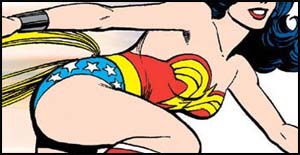
Well, my little graphic novel digression sparked a very interesting conversation with Elzey over at the excelsior file, and I encourage anyone interested in this topic to go check it out. The discussion has made me want to dip my pen into this well a little deeper.
In his well-reasoned and well-documented post he points out that this whole “children’s graphic novel trend” is really at least 20, and perhaps more like 50 years in the making, and I have to agree with him. On the shoulders of giants, as it were.
As someone who has always been drawn to graphic work–(starting with Wonder Woman, Tintin and Asterix, and continuing down the shelf to things like Optic Nerve, Ghost World, and Dave McKean’s Cages)–I have a great appreciation for the groundwork laid by everyone from Windsor McCay and Hergé, to Will Eisner and Art Spiegelman, as well as more contemporary voices like Chris Ware, Adriane Tomine, Joe Sacco, Daniel Clowes, and Jamie Hewlett.
Current success stories like Marjane Satrapi, and the recent graphic adaptation of the 9/11 report by Sid Jacobson and Ernie Colon continue to raise the visibility and credibility of graphic novels in the mainstream book buying market. (The fact that Jacobson and Colon are also the industry veterans behind Richie Rich and Casper the Friendly Ghost makes the whole 9/11 project just that much more brilliant for so many reasons beyond their great artwork.)
It was not my intention to suggest below that this whole children’s graphic Trendwatch is coming from nowhere. There’s no such thing in culture as the virgin birth. In fact, I would argue that what’s happening here isn’t so much that there’s a new genre in town, but rather, that mainstream publishing is finally catching on to something the underground has been into for years.
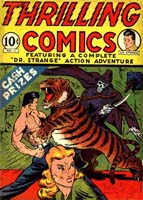
Here’s what IS new
- Libraries and bookstores are carving out dedicated sections for graphic forms IN THE CHILDREN”S SECTION. (Previously, something like Tintin or Little Lit would wander between the picture book section and the comic anthologies over near humor somewhere)
- Mainstream publishers are launching graphic imprints at an astounding rate
- Adult graphic novels are suddenly being edited and published in the regular fiction lists of big publishing houses along side the next Oprah pick
- Children’s graphic novels are being reviewed by traditional awards committees and winning, like Gene Luen Yang’s recent Printz for American Born Chinese
- Graphic novels are inspiring pleasant dreams of $$ for the upper management in big publishing houses in a market that has been flat
- Suddenly my mother knows what a graphic novel is
I have noticed a funny thing about cultural ideas that suddenly hit the mainstream like this. There seems to be a direct inverse relationship between the number of times a buzzword is used in the press, in marketing meetings, and at cocktail parties, and the corresponding depth of people’s actual knowledge of the word. It’s like the word or concept gets stripped of its nutritional value, and all we know of it is its candy coated shell. Tastes great, but not much fiber inside.
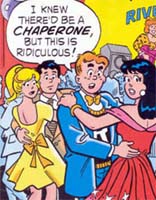
What really interests me in this whole discussion is why now? What’s the tipping point—(thanks Malcom Gladwell)—that’s pushing this over the edge? Is there really an honest demand on the part of children for this, or are we creating our own market and making it so? I do think there is something to the idea that the post-computer, post-gameboy generations are more primed to relate to the world on a fast moving visual basis. I also think there’s something to the idea that publishers have latched onto this trend as the next “big thing”, and are milking it for all that it’s worth.
Toward the end of his recent post, Elzey makes some really important points about the precarious place we find ourselves in right now regarding the future of this “trend” in the children’s market:
- Everyone seems to agree that graphic novels are a valid literary form, but there’s much confusion over what constitutes “good or worthy graphic literature”.
- In an effort to cope, “Booksellers either don’t carry graphic novels because they don’t understand the genre or, as with the larger chains, they carry large amounts of what is carried by the major publishers in a scattershot somethings-bound-to-click-with-the-public manner.”
- It’s not a graphic novel just because you take a book and draw it out rather than write it out. Especially if it’s bad to begin with. Likewise, re-purposing existing property by putting it in a graphic format—read: Nancy Drew, The Time-Warp Trio, Goosebumps—does not a quality graphic novel make.
- If we’re going to consider graphic novels as literature, we need to apply some rigorous criteria to determine what is good. This is especially true as publishers gear up to flood the market. As someone who represents independent booksellers, I would welcome this, as would my overworked constituents.
- If we’re going to give away awards to graphic novels, let’s not get into the tricky business of comparing them in the same category as written fiction. In Elzey’s words “I think we need to give them their own category and not spend a lot of time wringing hands over comparing apples to oranges.”
For sure, there’s some really great work being done in this field right now, and I hope it gets its just rewards. Some of the most promising new launches are being done with vision and passion, (see my comment about 01:First Second below), and the great graphic imprints like Drawn and Quarterly and Fantagraphics continue to stick to their mission. Artists like Regis Faller are making wonderful books for children that bridge the genre gap, and backlist classics that were way ahead of their time are no longer orphaned. They now have a home in a dedicated children’s graphic section.
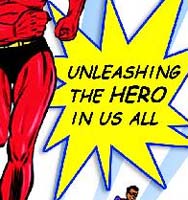
What lies ahead? I expect the usual rubber-band effect. For awhile there will be a real glut of graphic work for children, and much of it will be marginal to awful. The gems will be there, and discerning booksellers and librarians will find them, and hug them to their collective bosoms. Those gems will join the classic backlist to form the bones of a really good children’s graphic section, and those great new works will be wonderful publishing success stories. After saturation, there will be a cooling both of the market, and of upper management’s enthusiasm, and we’ll be back on the ground, further ahead than we were when we started, with some great books to show for the effort.
I still think it’s a tremendous time for graphic novels and other visual media. I hope that the most worthy artists will be able to take advantage of the favorable climate to kick some creative butt.
I also hope we, as an industry, develop a reputable yardstick for measuring quality very soon, before the fire goes out from too much kindling and not enough air.
Thanks, Elzey for giving me some excellent food for thought.
______________________________________________
Postscript 3/14:
Here’s a couple of really useful links for keeping on top of information on Graphic Novels and Comics for the kid_lit set:
Comics in the Classroom.net - great round up site of news and reviews on graphic media for children written by a teacher from New Brunswick, Canada.
The Graphic Classroom - reviews of graphic media suitable for the elementary classroom
Blog: pixie stix kids pix (Login to Add to MyJacketFlap)
JacketFlap tags: General Comments, Add a tag
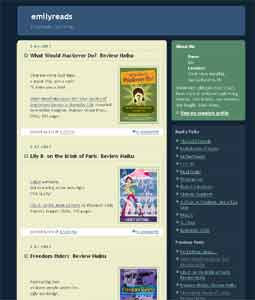
Blog Alert in Poetical Praise
by Kristen
This little blog is brilliant!
It’s emilyreads.
All book reviews in haiku!
****
Thanks to Mother Reader for pointing me in the direction of this blog.
Blog: pixie stix kids pix (Login to Add to MyJacketFlap)
JacketFlap tags: General Comments, Add a tag

It’s not bad enough that Global Warming is going to take away our summer vacations at our favorite low-lying coastlines, flood our harbor cities, and drop large chunks of Greenland and Antarctica into the ocean.
Now it’s taking away books from children.
(Or a least it would be if the Canadian Government weren’t so resourceful.)
I kid you not.
Check out this article from yesterday’s Toronto Star about how the Canadian Government had to airlift 7,000 children’s books into some of the most remote northern villages because the usual route of transport–winter roads–are too dangerous this year because of Global Warming.
It was quite a sight, according to one witness in the teeny town of Fort Sevren in Ontario. “It was spectacular! The sun was shining, it was 10 below and suddenly the big Hercules came swooping into view, tipped its wings from above 800 feet above us and out came eight parachutes with crates of books floating to the ground,” said Bartleman from the tiny community about two hours from Hudson Bay.“We all jumped on the back of snowmobiles and pulled sleighs out onto the ice to load up the books. Some of the children ripped open the boxes and started to read the books right there in the snow.”
Someone better call Al Gore.
Blog: pixie stix kids pix (Login to Add to MyJacketFlap)
JacketFlap tags: General Comments, Add a tag

Here’s the very last word on the whole scrotum debate, straight from the author’s mouth, as it were.
Check out this thoughtful article, penned by Patron herself that ran in yesterday’s LA Times, where she explains that part of the problem behind this whole scuffle is “fear of giggling”. Well, that and the possibility that kids might actually learn something that will allow them to challenge adult beliefs and become their own persons.
“Fiction, especially, gives that reading child a tool to decipher the mysteries and paradoxes of being human. Give a child a nonfiction book explaining the cycle of life and death, and he may come to a cerebral understanding of the concepts. Give him “Charlotte’s Web” and his heart will burst. He’ll feel empathy in a deep and lasting way.”
Amen.
Blog: pixie stix kids pix (Login to Add to MyJacketFlap)
JacketFlap tags: General Comments, Add a tag

Okay, I’ve been so focused on my ire about the great scrotum debate that I totally missed this 2/21 article about parents behaving badly in an ongoing disagreement with the Miami Public School System over several books that Cuban-American parents say portray Cuba in too rosy a way.
Apparently, one parent, fed up with all of the red tape she and her fellow “concerned parents” are having to go through to remove [censor] books from the school library, simply decided to check the books out, and never return them.
My favorite quote: “‘If you take it out and don’t return it, no kid can read it,’ Rodriguez, who is a member of the Concerned Cuban Parents Committee, said Wednesday. ‘It’s not censoring; it’s protecting our children from lies.’”
Aye carumba.
________________________________________________________________
Full disclosure: ABC participated in the filing of an amicus brief late last year along with ABA, ABFEE, and many other organizations in support of keeping the books in the Library as a part of the on-going legal debate in Miami. You can see the brief here.
Thanks to Bookshelves of Doom for the good catch.
Blog: pixie stix kids pix (Login to Add to MyJacketFlap)
JacketFlap tags: General Comments, Add a tag
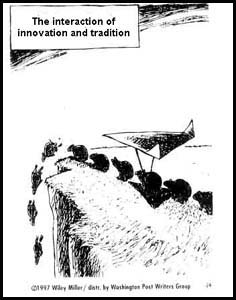
Many thanks to all of the new readers who have been visiting the site and passing along links to the Kerfuffle post these past three days. I appreciate the many insightful ideas you guys have been sending my way in the form of comments and e-mails. It warms the cockles of my heart to know that saner heads can prevail when the timid and the confused lead us off the cliffs of absurdity.
-Kristen
Blog: pixie stix kids pix (Login to Add to MyJacketFlap)
JacketFlap tags: General Comments, Add a tag

Scrotum.
Scrotum, scrotum, scrotum.
Go ahead—say it with me—scrotum.
There—that wasn’t so bad, was it?
I must say, the tempest in a teapot stirred up by the press over this issue these past two weeks says a lot more about the state of information dissemination in this country than anything else.
Here’s the anatomy of a kerfuffle:

1) An author (who also happens to be a public librarian) writes a quiet book about a smart and plucky girl who has a question about an anatomically correct word, and no adult to talk to about it because she has a tough home life
2) A prominent committee of librarians and acknowledged children’s literature experts, working on behalf of a venerable and respected association, picks this relatively unknown book for a major award
3) A group of librarians from various parts of the country debate the worthiness of the committee choice on a closed list serv, and a few get really uppity about a certain word choice
4) A publishing magazine of record takes note and reports on the word and the debate, taking care to talk to people on various sides of the issue (2/15)
5) A national paper of record notices said article, and publishes a less than thorough report on the issue on its front page, fanning the flames of controversy, and capturing the attention of televised media. Kerfuffle is in full swing (2/18)
6) Media talking heads and blogosphere chime in (2/20)
7) The same paper runs a short op-ed piece to balance the scale, bemoaning the crucifixion of “a sweet, funny book”, and throwing in references to The Music Man and Balzac. (2/21)
8 ) A publishing reporter for a national wire service decides to check up on the key players for a follow-up story about how the issue became a story in the first place, and finds inconsistency and hyperbole everywhere (2/22)
9) Embarrassed librarians backtrack
10) Much ado becomes nothing. Kerfuffle subsides
***
I think there are some important observations and lessons to take away from this whole soap opera.
I don’t know about you, but here’s what I’ve gleaned:
Blog: pixie stix kids pix (Login to Add to MyJacketFlap)
JacketFlap tags: General Comments, Add a tag
Apparently, MTV has (finally) caught on to the fact that there are some very good kids books being made into movies. I guess Holes, The Lion the Witch and the Wardrobe, Because of Winn Dixie, Harry Potter I-IV, and Charlotte’s Web weren’t really a trend, but somehow Bridge to Terabithia has pushed it over the edge.
Anyway, now that they’ve “caught the wave” so to speak, they have put together a pretty decent list of other kids books they think might be good movies.
Check it out on their website.
For me, the delicious irony of seeing Are You There God, It’s Me Margaret? right next to Flat Stanley makes me laugh. Apparently, after quoting a line like “Are you there, God? It’s me, Margaret. I just told my mother I want a bra. Please help me grow, God. You know where.” the author had flat-on-the-brain.
Too funny.
Blog: pixie stix kids pix (Login to Add to MyJacketFlap)
JacketFlap tags: General Comments, Add a tag

A quick heads up that I built a new resources page today in response to a reader who was looking for books and other places to explore as she started a collection of great kids books.
Feel free to e-mail me or comment if you have other suggestions to add.
Blog: pixie stix kids pix (Login to Add to MyJacketFlap)
JacketFlap tags: General Comments, Add a tag
I am amused by this snipet that appeared in today’s Shelf Awarness. I want to know if they will all look like Kid’s Republic, which I have already drooled over in a past post.
If so, I am moving to China. Tomorow. (Okay, maybe next week….)
——————————————————
Book Store 200,000, Near and Dear to Its Customers?
“The Xinhua News Agency announced that over the next five years China intends to open 200,000 bookstores to serve some 900 million people in its rural areas. My broken calculator tells me that works out to four and a half books per person, if each store serves an audience of about 4,500 readers and stocks a thousand titles, as planned.
“Then, I wonder, could there possibly be 200,000 bookstore names in China? New York City stopped naming schools and went for P.S. 1, P.S. 2, and so forth. China could name new bookstores B.S. 1, B.S. 2 all the way up to B.S. 200,000.”–Tony Miksak, former owner of Gallery Bookshop & Bookwinkle’s Children’s Books, Mendocino, Calif., speaking on his radio show, Words on Books, on KZYX and KZYZ-FM in Philo, Calif.



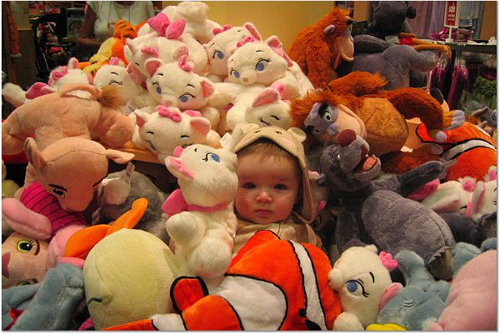



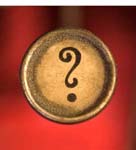


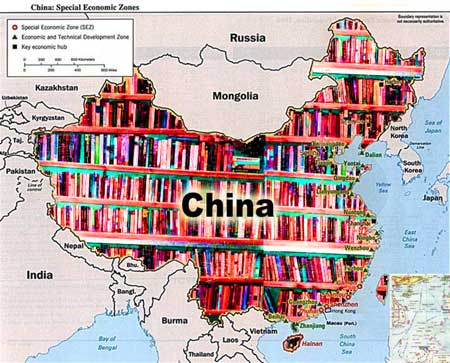
I already emailed you this, but I’ll say it again: Brilliant! And thanks for writing this.
[...] read this from Kristen McLean over at pixie stix kids [...]
Just wonderful writing. You are so informed and clearly read the original article well.
I’ve come from the recommendation of 7 Impossible Things Before Breakfast and i’m so glad I did. As my blog focuses on children’s literature it’s always useful to keep up to date with what people think about the state of children’s publishing- I agree with what you said.
As I want to get into publishing, I’m always asking myself how would I market a new children’s book to show I have fresh ideas above the norm? You’ve highlighted a great issue that publishers can’t just ‘lure’ the reader in, there has to be a promise of something greater beyond that, something that will complement their reading experience.
Just fantastic, I’ll be mentioning you on my book blogger hop tomorrow.
Oh and Emily Gravett is just marvellous and I just came across Shaun Tan’s work on Monday and hope to review his work soon, just beautiful.
Thanks for sharing.
Thank you guys for your awesome comments. I always appreciate knowing someone is listening.

Excellent insights here. Your point about focus and attention, and the new skill of “mindful tasking” is key for me. It’s critical that we teach children how to slow down and enjoy a book, a conversation or the process of artistic creation, and how to determine what deserves their valuable attention. Not all books need to become content saturated, multi-media digital gateways.
As an illustrator (non-digital), I am in no hurry to see my drawings presented on screen. But, of course, it’s inevitable. And reading is good, screen or paper, so I gotta get over it. I totally agree with what you say about presentation. Any urges to turn a book into clickable images, animation, and general whiz-bang should be put down. Consistency and repetition are key for the little ones. That’s why print, to me, to them, is irreplaceable. It cannot be changed (unless they tear it up, draw on it, etc…).
[...] written this post tonight is because I was inspired by Kristen McLean at Pixie Stix Kids Pix http://pixiestixkidspix.wordpress.com/2010/03/23/obvious-watch-preparing-kids-for-the-digital-future… to think about the importance of a child’s progressive reading experiences as they grow [...]
Love, love this post! How could I not? It contains so many of the ideas I’m constantly preaching through my blog and presentations, although I don’t always express them as eloquently as you.
What’s often missing (and I know, since teachers will tell me this) is a solid foundation in teacher prep courses in the “hows” and “whys” of teaching with good literature, at any level.
I guess awareness of its importance is a good start.